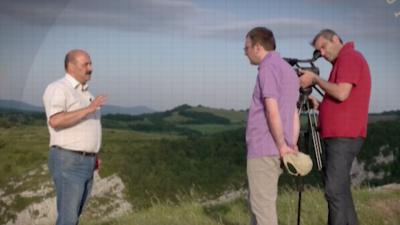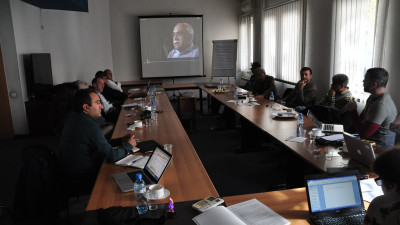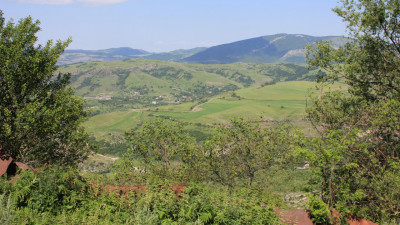
"Enough, to hell with this film!" Tearing up the script, the producer stormed out of the room.
Such tense scenes were commonplace during the production by Armenian and Azerbaijani filmmakers of the 3-part documentary film series Parts of a Circle on the history of the Nagorny Karabakh conflict.
Prevented by the unresolved conflict from travelling to one another’s countries or filming together, the films are the product of years of negotiation over each shot, every line of dialogue. Yet, the tenacity of the filmmakers prevailed and the result is an outstanding example of artistic cooperation in unfavourable circumstances.
Bridging competing war narratives
"We decided to create a film where the viewer would be exposed to two approaches, two stories, and try to bring them as close to each other as possible, and thereby to create a ‘circle’ forming the parts of both narratives", remarks producer Nouneh Sarkissian, of Yerevan’s Media Initiatives Center. "It was a risky idea [which] demanded huge investments of time, effort, emotion and resources," she added.
Aliya Haqverdi, an Azerbaijani journalist who worked on the films, explains the challenges: "Is this or that word in the script politically ‘correct’ or is it offensive to the other side? How can we have shared the same geographies for so long and yet know mountains, rivers and villages by different names? Armenians and Azerbaijanis stare at each other in miscomprehension, but they are talking about the same thing."
Beginning in 2012, the series of three films was produced jointly over a period of four years. They focus on the lead up to the outbreak of war, the war, and the search for peace. They were followed in 2019 by a summary English-language film produced by Conciliation Resources, which draws on materials used in the first three films, and aims to bring the rich material they contain to a wider international audience.
The films draw upon rare original interviews with eyewitnesses and participants in the events of 1988-94, from presidents to military field commanders, to ordinary people whose lives were turned upside down by the fighting.
Seeking to bridge the competing narratives that have divided Armenians and Azerbaijanis since the late 1980s, the films offer to viewers an opportunity to triangulate their own views. "Rather than add new lies onto existing falsifications, we were attempting to push the existing myths and propaganda aside and create a picture that was closer to reality, to tell the story of this conflict from all sides", remarks Shahin Rzayev, one of its Baku-based producers.
A shifting political landscape imposes new constraints
The Parts of a Circle project weathered a period of dramatic decline in Armenian-Azerbaijani relations and a major escalation of violence claiming more than 200 lives in April 2016. As a result, it has not so far been possible to promote the films as widely as initially hoped, though they have been screened on more than 100 occasions in closed settings to a wide range of Armenians and Azerbaijanis, including journalists, students, policymakers, people living close to the front lines and those displaced as a result of the conflict.
However, following several years of fiery rhetoric and stagnation in the negotiations, in January 2019 the foreign ministers of Armenia and Azerbaijan reportedly agreed on the need to ‘prepare their populations for peace.’ It is in this spirit, of seeking to create an environment more conducive to peace, that Conciliation Resources and project partners are now preparing the ground to make Parts of a Circle available to a wider audience.
Recognising the suffering of people from all sides to move forward
But unlike many peacebuilding films, Parts of a Circle is not intended to recapture harmonious moments of historical co-existence, vital as these memories are, but to challenge viewers to interrogate their own truths about the past. "This is a film that destroys myths", remarked one viewer in Nagorny Karabakh. For many, watching the films is a deeply uncomfortable experience. But enduring this discomfort is the first step on a long journey "from awareness, to acknowledgment, and to eventual reconciliation of two incomplete narratives that have existed independently of each other," say Laurence Broers, Conciliation Resources’ Caucasus programme director, and Jenny Norton, a consultant on the project. This "can create the space for a unified narrative, breaking the monopoly on victimhood and acknowledging the stories and suffering of people from all sides."
"If Parts of a Circle contributes to the beginning of this journey, the project will have fulfilled its purpose," they add.
Hear from the films’ producers and find out more about the uniquely challenging production process in our short summary film.



